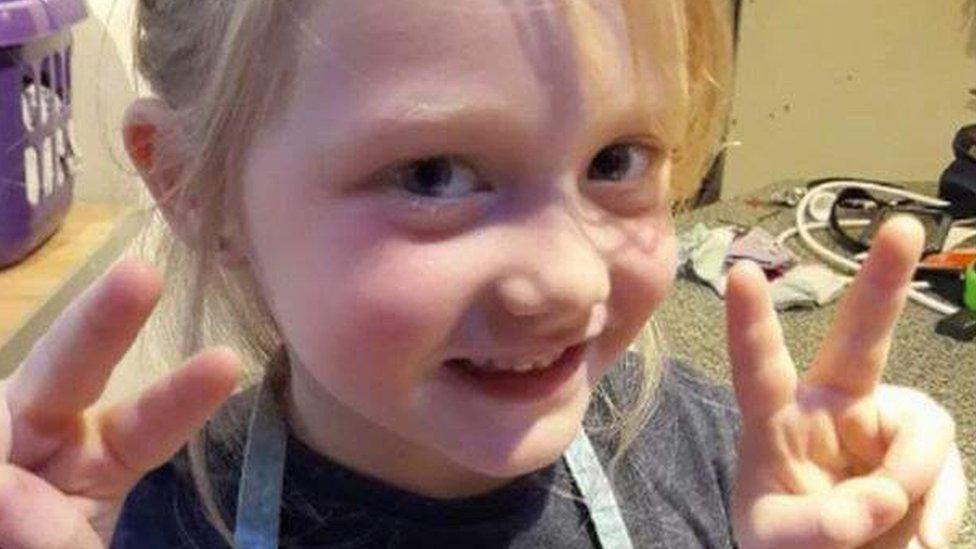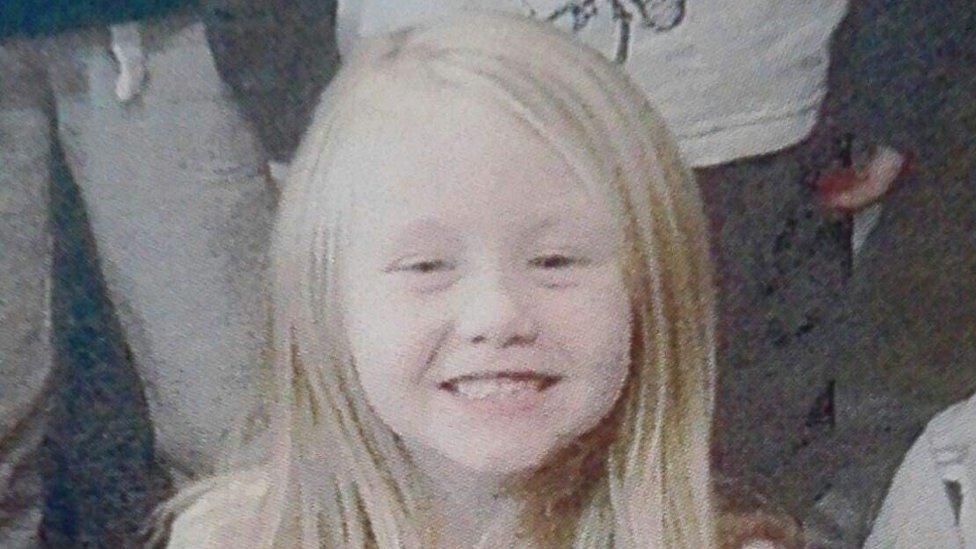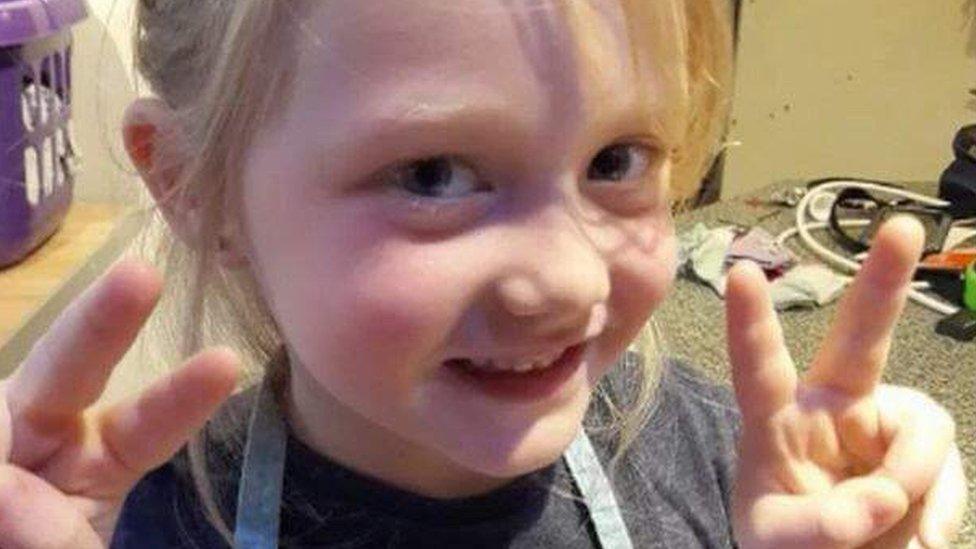Alesha MacPhail murder trial: Jury told of DNA Google search
- Published

An internet search for "How do police find DNA" was allegedly made on a phone said to belong to the 16-year-old accused of murdering Alesha MacPhail.
A cybercrime expert told jurors the request was made on Google at 00:32 on 3 July last year, the day after the child's body was discovered.
He said the phone was then used to access a How Stuff Works article entitled: "Collecting DNA evidence".
The accused denies abducting, raping and murdering six-year-old Alesha.
The evidence came from cybercrime team leader Peter Benson.
It was contained in an 89-page report which was compiled after a forensic examination of an iPhone 6, said to belong to the accused.
Alesha's body was found in a wooded area on the Isle of Bute on 2 July last year.
The High Court in Glasgow previously heard Alesha suffered 117 injuries and died from significant pressure being applied to her face and neck.
She was only days into a summer break in Rothesay when she was killed.
The teenager has lodged a special defence claiming the crime was committed by 18-year-old Toni McLachlan, who is the girlfriend of the victim's father.
In previous evidence, Ms McLachlan has insisted she had nothing to do with Alesha's death.
'Missing' knife
The court also heard from Det Con Ian Wilson on the sixth day of the trial, who described the accused's response when charged by police.
The teenager was arrested on 4 July and was taken to Helen Street police station in Glasgow for a police interview, where he responded "no comment" to questions.
On being charged with Alesha's murder, he also replied: "No comment."
The detective said this was not unusual and was within the teenager's rights.
Det Con Graham McIlwraith also gave evidence and said he searched the accused's home and noticed one knife missing from a block of five.
Shown a photograph of a knife found on the shore opposite where Alesha had been staying, he said it "would appear to be the same design" as the Jamie Oliver brand knives found in the accused's house.

The jury later heard that fibres found on Alesha's clothing matched those on a pair of jogging bottoms discovered on the shoreline near Ardbeg Road.
The court was told a number of black polyester and black viscose fibres were identified on the child's vest, shorts and pants.
Forensic scientist Sarah Jones said there was "strong evidence" the fibres recovered from the clothing at the crime scene came from the component fibres of the grey bottoms.
A single polyester fibre from the waistband of a pair of boxer shorts, which were found intertwined with the jogging bottoms, was also discovered on Alesha's shorts, she said.
Miss Jones said 18 fibres found on Alesha's vest were found to be "indistinguishable" from those on the trousers.
The expert also said 36 fibres found on the child's shorts were found to be "indistinguishable" from those on the jogging bottoms.
A further five fibres found on Alesha's pants were also linked to the trousers.
The expert said the only other plausible explanation for was that the fibres came from "another textile source" and matched by chance.

The six-year-old was staying at her grandparents' house before she disappeared
But under cross examination by Brian McConnachie QC, for the accused, the witness said no fibres from a black Nike hooded top were found on Alesha's clothing.
The jury previously heard this top was found on the shoreline but ended up in a skip at the back of Rothesay Police Station after an officer deemed it was not relevant to the investigation.
The prosecution is expected to conclude its case on Tuesday.
The trial, before judge Lord Matthews, continues.

Why is the BBC not naming the accused?
It is illegal in Scotland to publish the name, address, school or any other information which could identify anyone under the age of 18 who is the accused, victim or witness in a criminal case
This law applies to social media as well as to websites, newspapers and TV and radio programmes.
However, the name of victims who have died can be published - so the BBC and other outlets are able to identify Alesha MacPhail.
How can an accused blame someone else for the crime?
Ahead of their trial, the accused can lodge a special defence such as self-defence (they were defending themselves from attack), alibi (they were somewhere else when the crime was committed) and mental disorder (the accused is not responsible for their actions because they were suffering from a psychiatric condition).
In this case, the accused has lodged a special defence of incrimination, which means he has claimed that someone else (Toni McLachlan) was responsible.
However, the Crown must still prove the guilt of the accused beyond reasonable doubt. There is no onus on the accused to prove their special defence is true, and he or she can still be acquitted even if the jury does not believe their special defence.
- Published15 February 2019

- Published14 February 2019

- Published11 February 2019
